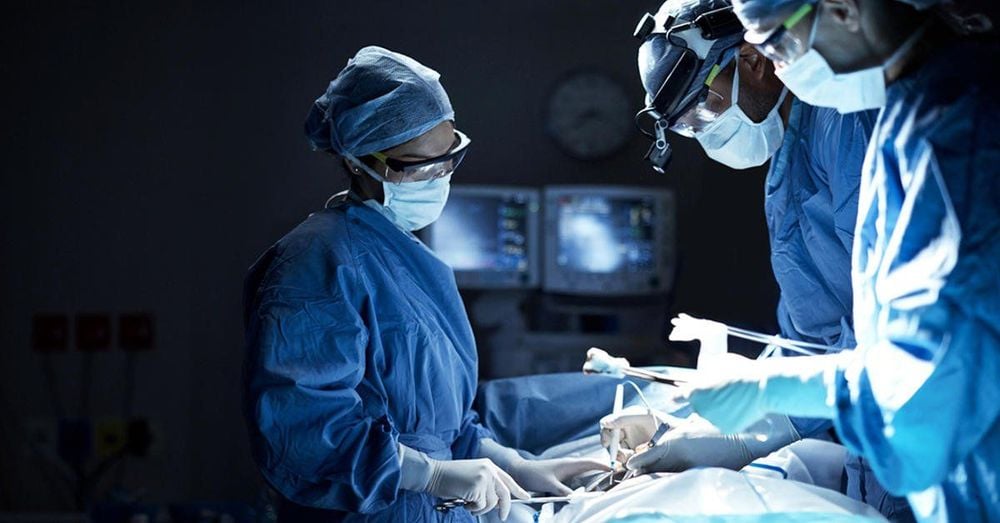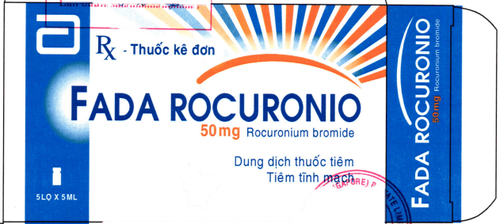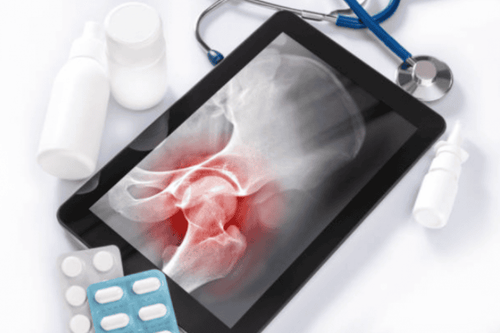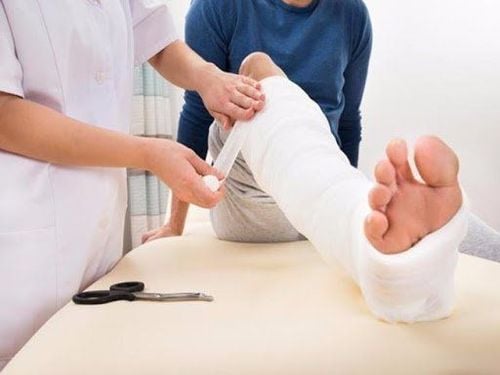This is an automatically translated article.
The article is professionally consulted by Master, Doctor Nguyen Viet Thu - Doctor of Radiology and Nuclear Medicine - Department of Diagnostic Imaging and Nuclear Medicine - Vinmec Times City International General Hospital.Shoulder fractures are a fairly common type of fracture. Any injury to the shoulder area can cause a fracture in this area. So how to know if the shoulder bone is broken or not? What medical techniques help diagnose a broken shoulder?
1. When is it called a shoulder fracture?
The shoulder is made up of a group of bones that work together to allow for flexibility in the shoulder and arm. The shoulder bone consists of: the upper arm bone, the collarbone (clavicle), and the shoulder blade. The shoulder has joints that are the alveolar joint (combination of the humeral head and the socket), the sacroiliac joint (the combination of the scapula of the shoulder and the outer end of the clavicle).Fracture of any bone in the shoulder can reduce shoulder mobility and cause severe pain. Shoulder fractures can result from trauma or injury to the shoulder from a fall. Other causes such as sports injuries, traffic accidents or any direct impact on the shoulder.
2. Types of shoulder fractures
The broken shoulder bone may not be displaced or displaced. Nondisplaced shoulder fractures are the most common and account for about 80% of all shoulder fractures.Non-displaced shoulder fractures are usually treated with non-surgical methods. Fractures with dislocations may require surgery to realign the bones.
Shoulder fractures can be divided into different types as follows:
Collar fracture: The collarbone is a long and thin bone located in the base of the neck. Fracture of the arm: The bone that runs from the shoulder to the elbow. Shoulder blade fracture: The shoulder blade is a flat, triangular bone located in the back area. Shoulder blade fractures are associated with falls or bumps. This can lead to the combined damage of shoulder dislocation or shoulder instability.
3. Symptoms of broken shoulder bone
Typical symptoms of a shoulder fracture include:Pain in the shoulder area, especially where the bone is broken. Swollen, bruised hematoma. Sensitive to pain. Deformity or swelling at the fracture site The color of the skin around the shoulder changes. Limited shoulder movement, and pain with movement. Any slight movement can cause pain in the shoulder area. Your shoulder feels like it's coming out of its socket, which is an unstable shoulder condition.

4. Medical techniques to help diagnose broken shoulder bones
To diagnose a broken shoulder, specialists will ask patients to perform advanced imaging tests. The goal is to determine the exact location of the fracture and the severity of the shoulder fracture. Laboratory techniques that may be commonly used to diagnose shoulder fractures include:X-ray of the shoulder. Shoulder CT Scanner. Shoulder MRI Shoulder musculoskeletal ultrasound. The images obtained allow the doctor to diagnose the most accurate condition of the broken shoulder. From there, the specialist will come up with the best treatment plan for the patient.
5. Treatment of shoulder fracture
5.1. Medical Treatment Measures Most nondisplaced shoulder fractures require immobilization in a bandage. The immobilization time is extended until the fracture heals enough to allow free shoulder movement. At the same time, this immobilization allows the patient to move without the risk of breaking the fracture.X-rays will be used to check to see if the fracture has healed sufficiently to allow range of motion exercises.
It is important when immobilizing the shoulder joint to maintain flexibility of the elbows, wrists and fingers. With your doctor's guidance, you can begin moving your shoulder once the fracture has healed. If you move your arm too soon, it can slow healing, but too little movement can lead to stiffness.
Besides, some other medical treatments can be combined to treat shoulder fractures including:
Taking common pain relievers like Paracetamol and/or Non-Steroid anti-inflammatory like Diclofenac,... Physical therapy once the fracture has healed to restore mobility of the shoulder arm. 5.2. Surgical treatment of shoulder fractures Shoulder fractures can be severe and associated with extensive damage to the surrounding skin and muscle. At that time, orthopedic trauma surgeons will be able to work with plastic surgeons to help reconstruct soft tissues in the shoulder.
Surgeons around the world today are constantly researching techniques and technologies, to make shoulder surgeries faster and easier for patients.
There are different types of fractures, so treatment for shoulder fractures will vary depending on the area of the shoulder affected and the severity of the fracture. Surgical methods for shoulder fractures that can be performed include:
Surgical immobilization of shoulder fractures: Applied to displaced bones or open fractures, surgery is necessary to repair the fracture. . During surgery, your doctor will repair any damaged ligaments, tendons, and muscles. For severe fractures, a shoulder replacement may be required. Partial shoulder replacement surgery: For severe shoulder fractures. A conventional shoulder replacement device, made up of a metal ball and stem, will be used to replace the damaged condyle and the upper part of the humerus. Patients who receive a partial shoulder replacement experience less pain. It also helps patients improve function and increase range of motion, allowing for a better quality of life. Total shoulder replacement: This method is used in some cases of severe shoulder fractures that require total shoulder replacement. In this method, a metal joint and condyle are inserted. The metal condyle was attached to the joint socket and the concavity was fixed to the scapula. This method helps patients reduce pain, while improving function and range of motion of the shoulder. Non-healing or dislocated shoulder fracture surgery: Applicable to cases where the bone does not heal by itself after fixation, or has healed but is not in the correct position. The goal is to better stabilize the fracture or stimulate bone growth with bone grafting. Orthopedic trauma specialists will perform surgery to repair complex dislocated bones by means of vascular bone grafting. Vascular bone grafting is a procedure in which bone tissue is transplanted to replace damaged bone tissue. However, there are few medical facilities worldwide that can perform vascular bone grafts.

Infection . Wound healing problems Bleeding Damage to the nerves and blood vessels around the fracture Shoulder stiffness In some cases, the fracture does not heal and the person may need another surgery. Shoulder fractures are one of the most common fractures. If diagnosed and treated promptly, the fracture will heal in the correct position, the patient can move the shoulder normally afterwards. If not treated properly, it can lead to serious complications. Therefore, people with shoulder fractures should follow the instructions of a specialist, to quickly recover and regain normal movement for the shoulder and arm.
Currently, X-ray is an imaging method performed routinely at Vinmec International General Hospital, including shoulder X-ray technique. The X-ray process at Vinmec is carried out methodically with a team of technicians and doctors of the Department of Diagnostic Imaging with many years of experience. In addition, Vinmec is now equipped with the most modern digital X-ray machines, meeting international standards for realistic and clear images, helping doctors to accurately diagnose diseases and stages. stage of the disease, thereby providing effective treatment, creating a sense of safety for the patient.
Any questions that need to be answered by a specialist doctor as well as customers wishing to be examined and treated at Vinmec International General Hospital, please register for an online examination on the Website for the best service.
Please dial HOTLINE for more information or register for an appointment HERE. Download MyVinmec app to make appointments faster and to manage your bookings easily.














